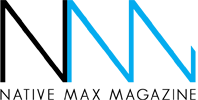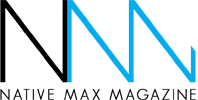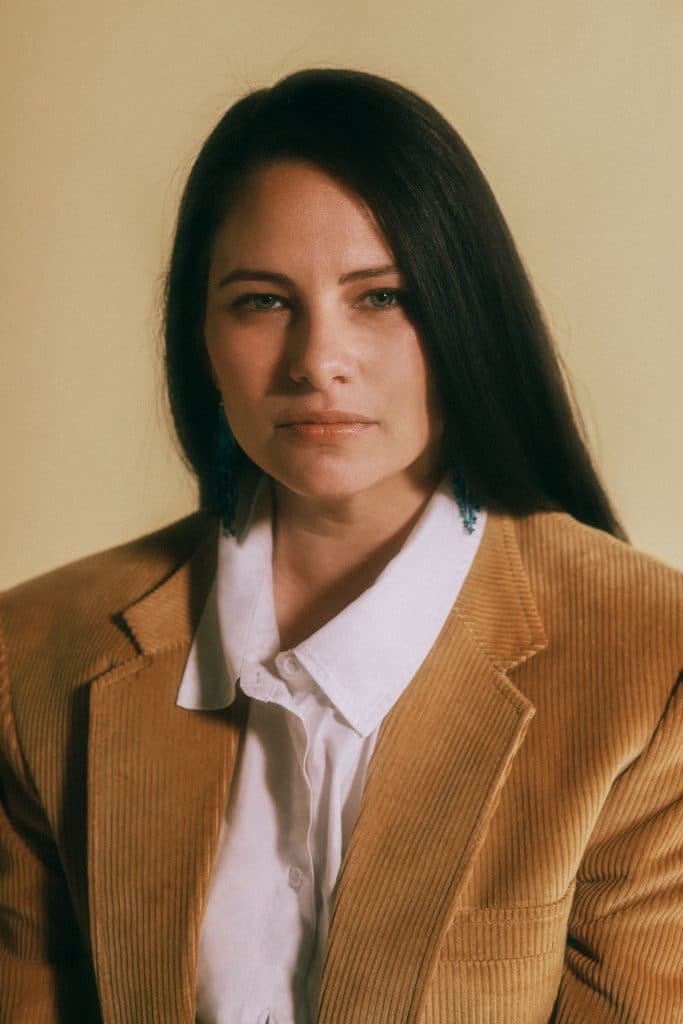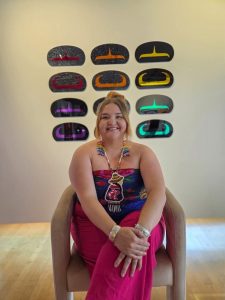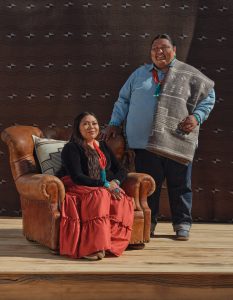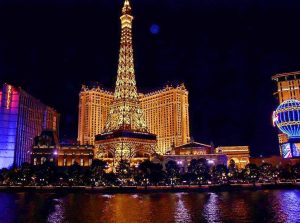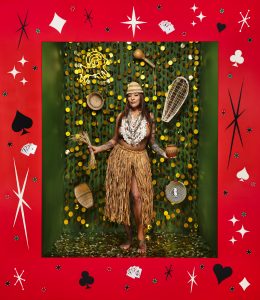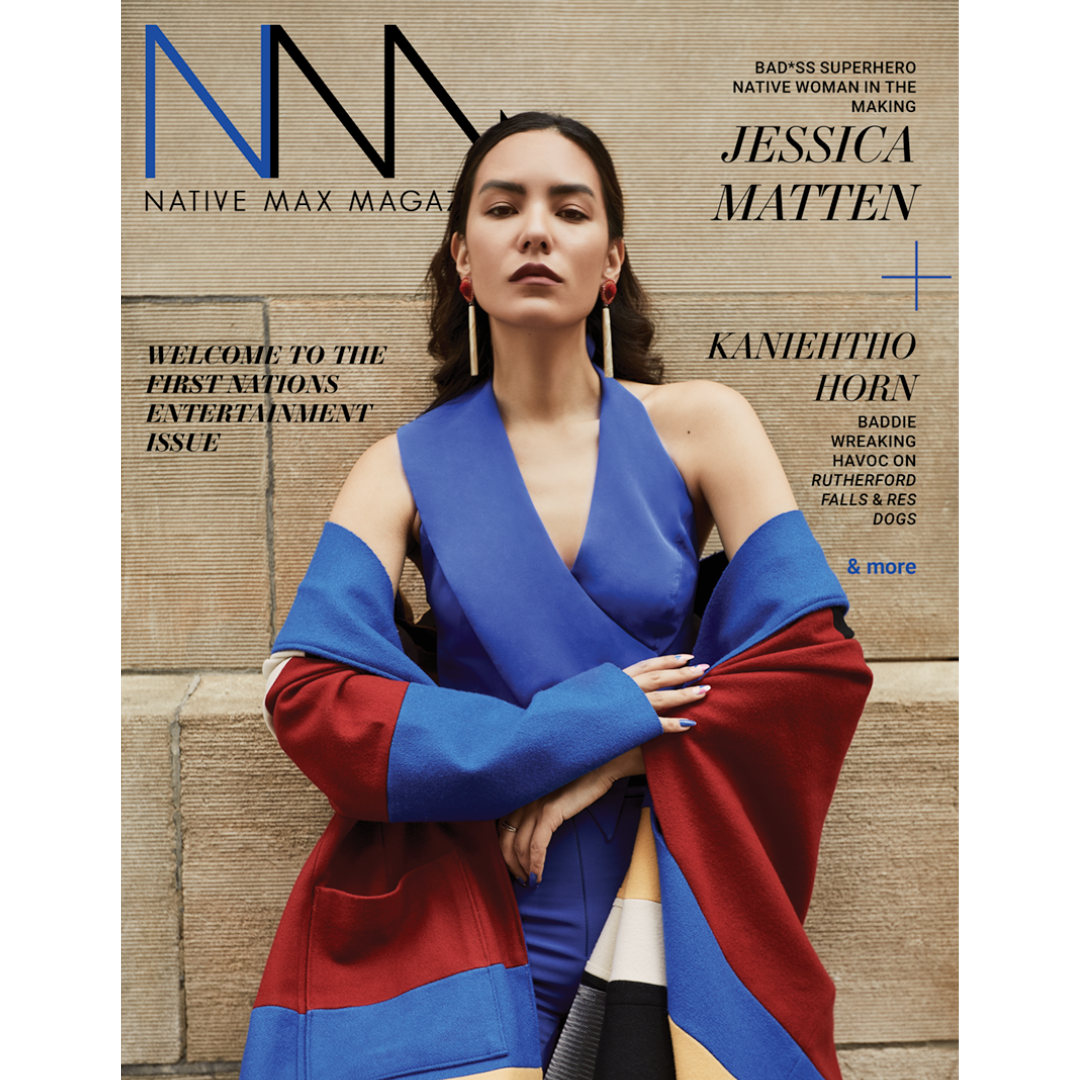Select a subscription plans
You need a subscription to access this content.
Nadia George is more than just an actor. She’s an award-winning Mi’kmaw-Canadian actor and media personality who focuses on uplifting the voices of Native youth, addressing stigmas around contemporary Indigenous identities and issues faced by Indigenous communities. “Her Water Drum,” a compelling film that Nadia starred in, which garnered her the win for the “Achievement in Acting” award at the 2018 Skins Film Festival, is used as a tool to educate youth and communities on the topic of MMIWG2S+. As a national ambassador for many organizations, Nadia works collaboratively with public figures to shed light on the mental health and well-being of Native people through various art forms, including her platform.
Thank you for joining us, Nadia. Where are you from?
Kwe’ [hello], my name is Kaqtikew E’pit [Thunder Woman], my Christian name is Nadia George, and I’m Bear Clan from the L’nu’k, or known in English terms, Mi’kmaq Nation. My Elder is Little Brown Bear of the Bear Clan. I was born in Guelph, and I’m currently based in Toronto, Ontario, Canada.
Would you please share with us a bit of yourself?
Currently, I’m a working actor, media personality, therapist, and public speaker. My life story is probably similar to many First Nation, Métis, Inuit, or under-privileged children of the eighties due to the colonial systems put in place in Canada.
My father had me at a young age, so I didn’t get to spend time with him until I was about seven years old, but I was fortunate to have known my great-grandma and began learning about my Mi’kmaw culture when I was around twelve years old. My great-grandma Ruby would share stories, but my dad was the one who continued teaching me more about our culture and traditions even after she passed.
I also became a parent at 18 years old and fought my way through many struggles, which led to toxic and abusive relationships later on in life. Both my parents had a very traumatic upbringing, which made it a bit more difficult for them to navigate the waters of parenting. As a child, there were many happy times, but also ones I wish on no child or person, and because of this, the Child Welfare System was a constant happening throughout my childhood.
My father was in and out of the criminal institution system for most of his life. Some years would be great, and I would spend every weekend with him, and other years we had our chats from within the prison walls, but at all times, he made sure to remind me that I should be proud of my Indigenous roots and never let anyone take them away. It was around 1996 to 1997 that the Native liaisons started coming to the prisons, and my dad was once again able to participate in healing ceremonies and workshops. He would send me medicine bags that he made and other handmade items they created in the workshops. I still have his smudging feather that was gifted to me when he passed away. I often laugh and smile when I look at it, as I’m pretty sure it’s from a seagull or pigeon that landed in the jail yard, but it holds more meaning to me than any other feather could.
It may seem odd that I’m grateful for all these lived moments, but they have contributed to the strong, resilient Indigenous woman I am today. I now do my best to use the teachings, lived experiences, and platform I’ve gained to bring awareness to Indigenous people’s challenges in Canada.
When did you decide to become an actor and media personality?
The inspiration came from two moments that happened when I was young. The first was from watching a young girl play Annie in a community theatre production. I remember thinking, “I want to do that,” and so at the age of 9, I did my first community play and was hooked. Regarding film, I remember seeing “Benny and June” in the theatre when I was 12 and being completely moved by Johnny Depp’s performance. I thought the idea of being in another world was exciting and didn’t realize at that age that movies were not always real. As mentioned previously, I had a tough childhood, so the thought of being able to live a different life made me hopeful. Then life happened and took me on another journey that led me to social work. In 2012, I was able to take theatre as a University elective, and I did so for the whole school year. It reminded me of how much I loved the creative arts and how much I missed expressing myself in that way. So when my son was about 16 and off living his own life with friends and passions, I decided to get back into it and started taking acting classes. The media persona came organically through my use of social media for acting. When I saw the power it could hold, I realized that this was how I would begin to use my voice to bring awareness to the issues that were important to me.
You use your platforms as an actor and public speaker to advocate for Native people and issues. Why is this important? What are some topics you focus on?
My work focuses on uplifting young voices, challenging the discourse on contemporary Indigenous identity, and advocating for the equity of Indigenous communities and people. I believe education and awareness on this matter are where change will start.
Watching the struggles my father had in the justice system, for instance, the lack of understanding about intergenerational trauma, and not being able to heal and learn in the ways of our culture, or being allowed to engage in traditional activities until much later in life, really opened my eyes as a teenager. Additionally, I began learning about the many statistics through both my father and schooling, around our MMIWG2S+, the over-representation of our people in the criminal system, the many children in the care of the government, and the number of communities without the basic needs to live, thrive and flourish. I found the anger and sadness brewing inside me and wanted to find a way to change the narrative about our people.
I finally realized that being rebellious and outspoken when I was a child was actually one of the gifts given to me by the Creator, and now I can channel that gift and put it to good use. It’s essential because our ancestors’ voices were silenced, so many generations were stolen, and today our people still suffer. I believe I have an opportunity and an obligation to start creating pathways for our future generations so they may walk with their heads held high, know what love is, and have positive life experiences. Using my platform as a public figure, I can help break the cycle of the intergenerational trauma that our Indigenous people in Canada are dealing with.
Also, how do you advocate for Native youth?
Presently I work with several organizations and creative outlets to help advocate for Native youth. First, I’m excited to announce that I have officially partnered with WATER FIRST, a non-government organization helping to address water challenges in Indigenous communities in Canada through education, training, and meaningful collaboration. I’m so honored to be their very first Ambassador! I will be volunteering my time to support their efforts to raise necessary funds and awareness of the water challenges in Indigenous communities.
For the last four years, I have served on the lived experience advisory committee for the Child Welfare PAC Canada. We are still a young organization but have had much success advocating for brighter futures for foster kids. We have successfully negotiated 210+ tuition-free spots at fifteen post-secondary institutions in five provinces for current and former youth in care; we created landmark legislation that gives foster children the same privacy rights as juvenile offenders by protecting their childhood histories; we advocated for more trauma-informed service in child welfare, and soon we’ll undertake national research comparing child welfare systems across the country.
In November of 2019, I joined the MotiV8 CAN team as a National Ambassador. That following year in February 2020, I had the wonderful opportunity to travel to Sachs Harbour and Aklavik, NT. Working alongside two other team members, we had members of all ages in both communities come and engage in wellness film workshops and creating murals. I love the work that Motiv8 CAN does. I appreciate that they work collaboratively with Northern Indigenous communities offering programs and workshops that focus on supporting mental health and well-being through various creative art forms.
Another important aspect of my advocacy work is creating safe spaces for new or novice Indigenous actors. Since creating the BIPOC Committee at Toronto’s LB Acting Studio, I’ve been a committee member and mentor for Indigenous actors. The entertainment industry can be confusing and sometimes dangerous. With what I know about the industry’s dark side and the correlation to our MMIWG2S+ community, navigating it without guidance can sometimes be fatal. Most of the time, I get messages about getting started as an actor. Still, too often, I receive messages on my social media asking whether an offer for representation or a brand collaboration is real, and most of the time, it is not. It is this type of scam that we lose our women, girls, and people to human trafficking rings.
Lastly, I speak in various communities, raising awareness about the contributions, history, and ongoing challenges Indigenous peoples in Canada face and addressing how we can implement trauma-informed practices.
What are some words of wisdom you love sharing with youth?
For most of my life, I was told that I couldn’t be things or do things, not just by people I knew but also by society and media. Looking back and being able to see my accomplishments is a valuable intrinsic motivator visibly. Being able to empower and support youth who were once told in any form that they couldn’t make their dreams a reality is the ultimate reward.
I remember once hearing someone say, “the sky’s the limit,” and I chuckled to myself because, in my mind, I wanted to take on the whole universe. Yet, it appears that even in our motivational speaking, we are still saying words like ‘limit.’ Indigenous people for years have been limited, and it is essential that we let our youth know that they are so much more than the surface of their skin or the size of their waist. Native youth need to dream big because there is no limit to what they are capable of. Media and society have fed us this destructive narrative of what Indigenous people are and look like. I’m happy to see that a change has happened in that discourse. Our youth stand up for their communities and cultural ways, coming together and supporting one another, and standing tall. They are using their voices, and I like what I’m hearing.
If I could share one thing for all Indigenous youth, it would be that the world is full of opportunity. You didn’t fail when you make a mistake; you just found a way it didn’t work, so don’t give up. I would tell them that the opinion of others is not the definition of who they are. I would encourage them to be patient with themselves and show kindness to themselves. I would tell them it’s okay not to know what they want to be when they grow up or if they do know, then to chase that dream; and if that dream changes, that is perfectly fine! I would remind them that they are strong, intelligent, and important.
Lately, you’ve been sharing ways people can celebrate Indigenous history and presence for Indigenous Peoples Day in Canada through various platforms. Why is this education important? And what are some ways people can celebrate Indigenous history and presence all over Turtle Island?
This education is vital because, without it, all newcomers and settlers will never understand why we encourage and ask them to use their voices. Their voices are instrumental in ensuring that Canada rights the wrongs done to First Nation, Métis, and Inuit by the Government, Catholic, and Anglican Churches and to help dismantle the oppressive systems in place in Canada. Suppose the real history isn’t talked about. In that case, these groups will continue to be lied to and misled about the contributions made by Indigenous people and the genocide that Canada is accountable for. Non-Indigenous people must know about the crimes that their “loving” country has committed: the robbery, child trafficking, kidnapping, enslavement, abuse, and murder that has happened and continues today. Non-Indigenous people have greatly benefited, whether knowingly or unknowingly, from Indigenous people’s continued oppression and traumatization.
When we come together as human beings, as allies and advocates, we show that Indigenous voices are being heard and healing is happening. Celebrating Indigenous culture all over Turtle Island [North America] is a significant component to building positive relationships with First Nation, Métis, and Inuit communities. It allows settlers and newcomers to learn, engage, and deconstruct any negative biases or assumptions they may have.
People can celebrate Indigenous history and presence in several ways:
- Come to celebrations and events, like Pow Wows, Art & Craft Workshops
- Read books by Indigenous Authors
- Go to their local Native Friendship Centers and speak to our people, hear their stories, and volunteer
- Watch Indigenous movies and documentaries made by Indigenous creators
- Purchase Native-made items, not Native-inspired
- And challenge negative stereotypes, stand with us, and be a part of a better future for
- all
Lastly, is there anything else you’d like to add?
I’ve said it before, and I’ll say it again, all non-Indigenous people must remember that when they are working or supporting Indigenous people in Canada and all across Turtle Island, the 3 R’s must be followed: Representation, Recognition, and Reconciliation. We see this more in schools, the media, and the entertainment industry, but we still have a long way to go. With that being said, there is hope; I see it in our youth. They are stronger and louder now more than ever, and I know that change is coming.
